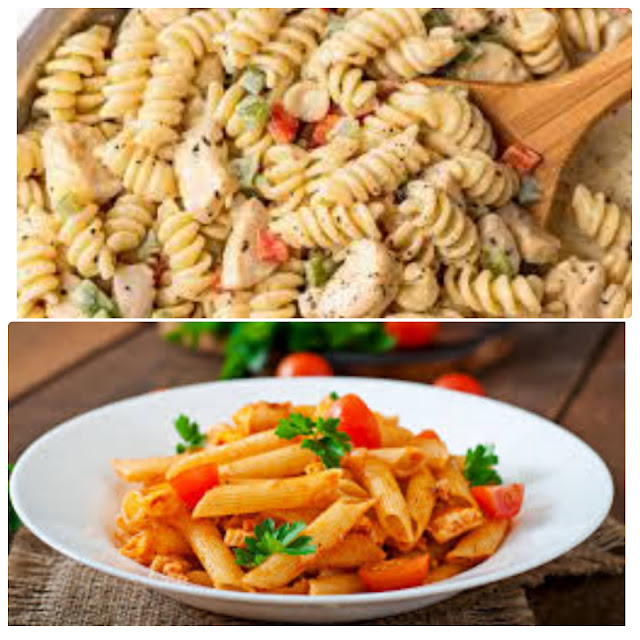Regular intake of pasta – all the pros and downsides
Quite frequently overweight persons and those who follow a diet are restricted in the intake of Italian pasta. It is considered that this product is highly heavy in calories and inevitably leads to the buildup of excess pounds. But not everything is that straightforward.
 |
If you look at the Italians – a nation for whom the wonderful pasta is nearly a cult, you will not find many full individuals among them. And this one again indicates that pasta is not necessarily the cause of overweight. So what’s the secret? Let’s look at all the positives and dangers of ingesting pasta. The paste is high in carbs, which should normally make up 60% of an adult’s daily consumption. Assimilated in the human body, the sources of energy are carbohydrates. The essential thing is that these carbs are nutritious.
 |
If we speak especially about pasta, then durum wheat paste will match these conditions. The cause for gaining weight while eating pasta might be buried in spaghetti sauces, which are fairly high-calorie items, butter and fatty meat, with which we lavishly compliment this kind of meals.
Based on research showing the advantages of durum wheat pasta, current nutritionists have designed a Mediterranean diet. Along with getting rid of extra weight, it minimizes the chance of developing disorders of the cardiovascular system and diabetes. In conjunction with vegetables, lean meat or fish, olive oil paste actually becomes a wonderful nutritional product.
The missing US Superfoods
When purchasing pasta, you need to pay attention to their look. Made with durum wheat paste, they will be smooth, solid, amber in color, without white specks. Pay attention to the nutrition table on the packaging, the protein level in it should be rather high.
Pasta, a basic food in Italian cooking, has become a staple appreciated in various foreign culinary styles. However, it’s important to discover the benefits of pasta, understand the different types of pasta and their related sauces, and also be aware of the calorie content in a normal amount of pasta. Nutritional statistics and information of 1 dish of pasta are in our article.
The nutritional contents in 1 dish of pasta are fairly variable. The nutrients in pasta are as follows;
– Carbs (g): 61.18
– Protein (g): 11.6
– Fat (g): 1.86
– Fiber (g): 3.6
– Calcium (mg): 14
– Sodium (mg): 262
– Potassium (mg): 88
How many calories in 1 dish of pasta ?
1 full dish of pasta contains a total of 314 calories. A 1/4 dish of spaghetti was assessed as 79 kcal. Pasta includes 80% Carbohydrate, 5% Protein and 5% Fat. These calorie and fat ratios rise with the extra nutrients added to the pasta.
32 Home Treatments That Can Save Your Life one Day ; Home Doctor
What are the advantages of pasta ?
🔸Pasta is a food notably rich in calcium and iron. In addition to these nutrients, pasta provides potassium, phosphorus, protein, and vitamins A, B1, and B2. Pasta having linoleic fatty acid and small oil components has varied health benefits such as decreasing cholesterol.
🔸Pasta is a food with high gluten. It also includes vegetable proteins and minimal starch. While producing pasta, semolina derived from wheat is put to the pasta. In addition, eggs and various veggies are added to make it pasty. Pasta, which is rich in substance, also provides several advantages.
🔸Pasta is a meal that may swiftly transform into energy in metabolism. Carbohydrates in it have the virtue of keeping you full since they mix into the blood more slowly.
🔸Contrary to popular opinion, it does not lead to major weight gain. It is hearty and suited for any budget. It minimizes the risk of diabetes and heart problems. It does not bother the stomach and is readily absorbed.
What are the varieties of pasta ?
Pasta is a food from Italian cuisine. For this reason, there are over 90 distinct varieties of pasta in Italy. In our nation, the most eaten forms of pasta are;
1- Spaghetti,
2- Linguini,
3- Fettuccine,
4- Oven pasta,
5- Auger,
6- Butterfly,
7- Bow,
8- Snail,
9- Ravioli,
10- Lasagna,
11- Couscous,
12- Pappardelle,
13- Tortellini.
 |
What are pasta sauces ?
Pasta is a meal that is commonly created by boiling in water. Some sauces applied to it, particularly after or while boiling, give pasta a distinct taste. The most regularly used sauces in pasta are:
– Bolognese sauce,
– Creamy mushroom sauce,
– Chicken Curry Sauce,
– Tomato sauce,
– Arrabbiata sauce,
– Basil sauce with Alfredo sauce.
Apart from these sauces, you may add additional sauces according to your preference.

